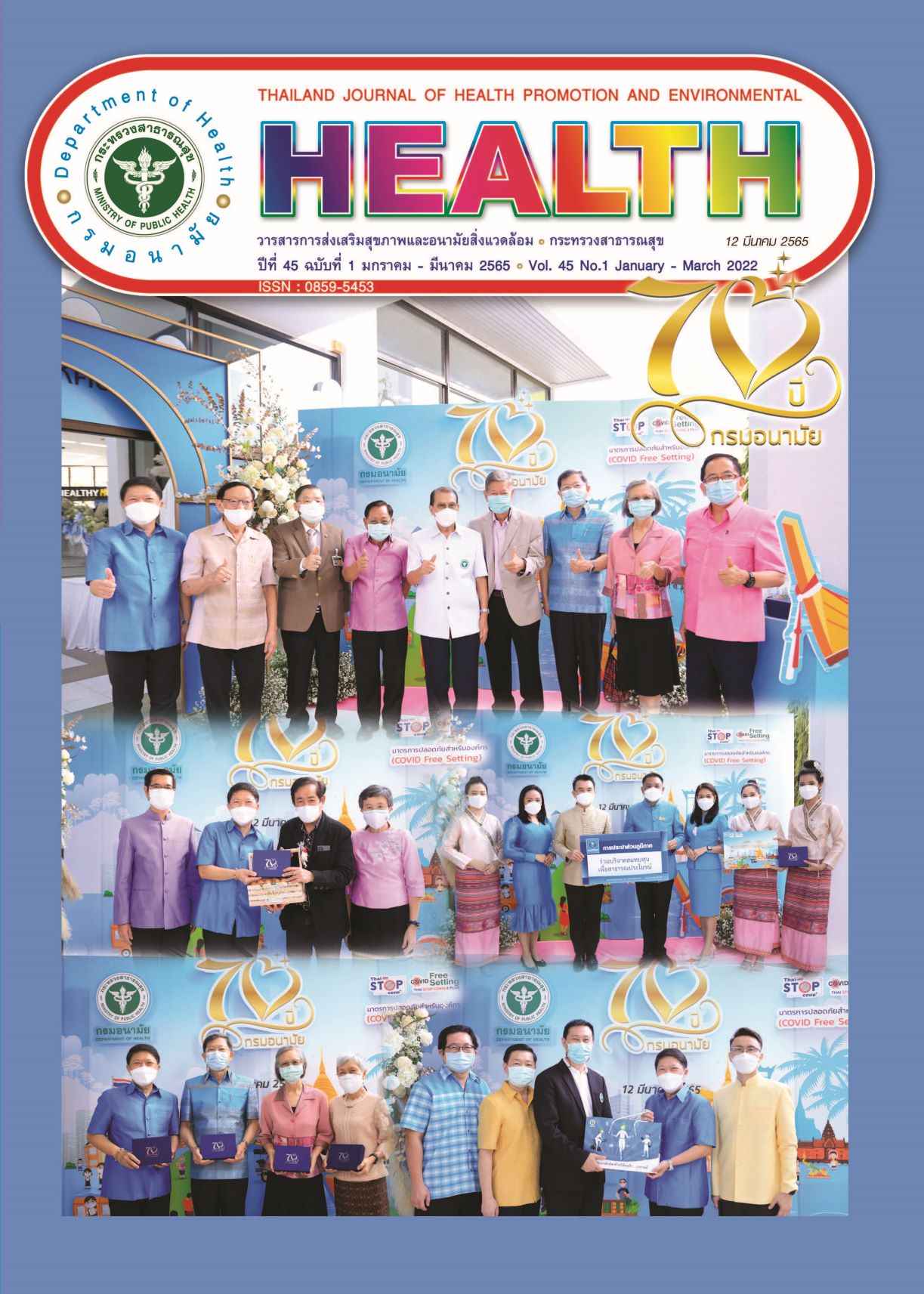A Thailand health services wastewater and effluent quality development
Keywords:
Waste water, Effluent, Disinfection, SARS-CoV-2, Waste water QualityAbstract
The health services or Hospital’s wastewater and effluents has been treated with the standard before eliminated to a public or environment. They are many services activities to generate waste water. They are 25,474 government and public places in Thailand. Especially in the situation of the Covid-19 outbreak, which is caused by SARS-CoV-2, thus affecting public health. Therefore, the research focuses on the situation and trends of wastewater and effluents quality, study and develop the new process to increase the efficiency of disinfection of the treatment system and leading to policy proposals for greater quality wastewater and effluents management. The results showed that there were an average of 1,355 wastewater and effluent samples/year. Most of them sustained the parameters standard just 15.1 - 56.0 percentage. With a quality trend was decreasing. The three level of a water parameters got over the standard were; Total dissolved solid, Coliform bacteria and Fecal coliform bacteria. They were over average 40, 31 and 31 percentage respectively. A Wastewater treatment also had a statistically significant effect on effluent quality in all parameters. including the wastewater contaminated with SARS-CoV-2. It was also found that the proportion of total dissolved solids (TSS), BOD, COD, coliform bacteria and fecal coliform bacteria significantly different (p-value < 0.01). The water type and SARS-CoV-2 contamination were significantly related (p-value = 0.023). Also found the risk values between the parameters and the contamination of SARS-CoV-2 were BOD and COD. A non-standard BOD value of wastewater/effluent with SARS-CoV-2 will be detected approximately 2.956 times as compared to the standard and 2.881 times of COD value. Then a wastewater and effluents are dangerous if released into nature. The comparation effectiveness disinfection microorganism test by Chlorine and Peracetic acid found significant difference (p < 0.05). The Peracetic was better disinfected than Chlorine. Peracetic acid helped dissolved all solid particles and Nitrogen, reduced BOD, COD in waste water. Then Peracetic was treated wastewater and effluents quality absolutely perfect than Chlorine. These research suggestion on the hospital management of wastewater and surveillance of SARS-CoV-2 from medical services by improving the management. Then the organization and country suggestion on waste water management are; 1) A different types of water quality control systems should be designed as a system that can integrate and have linked to an overview of the water quality situation of the area and country, by various departments must jointly the objectives for the use of water quality data Design guidelines on water quality control systems and efficient management of water quality data utilization, the operation must cover the roles of all stakeholders. 2) There should be an operation to verify the water quality control system and monitor the efficiency of the management system by creating a database that relevant stakeholder can easily use and keep up with changing. 3) Economic principles and systematic performance appraisals should be applied to assist in the continuous assessment of management efficiency every year. In order for agencies at both local and national levels to adjust their management to be more efficient and maximum efficiency 4) Study and develop the use of peracetic instead of chlorine that still has harmful substances and support it as the main measure of microorganism disinfection in the future. 5) Build and develop a test kit based on the measurement of wastewater and effluents that can indicate the quality and quantity of microorganisms from the BOD and COD values as indicators from this research.
Downloads
Published
Issue
Section
License
Copyright (c) 2022 Thailand journal of Health Promotion and Environmental Health

This work is licensed under a Creative Commons Attribution-NonCommercial-NoDerivatives 4.0 International License.

